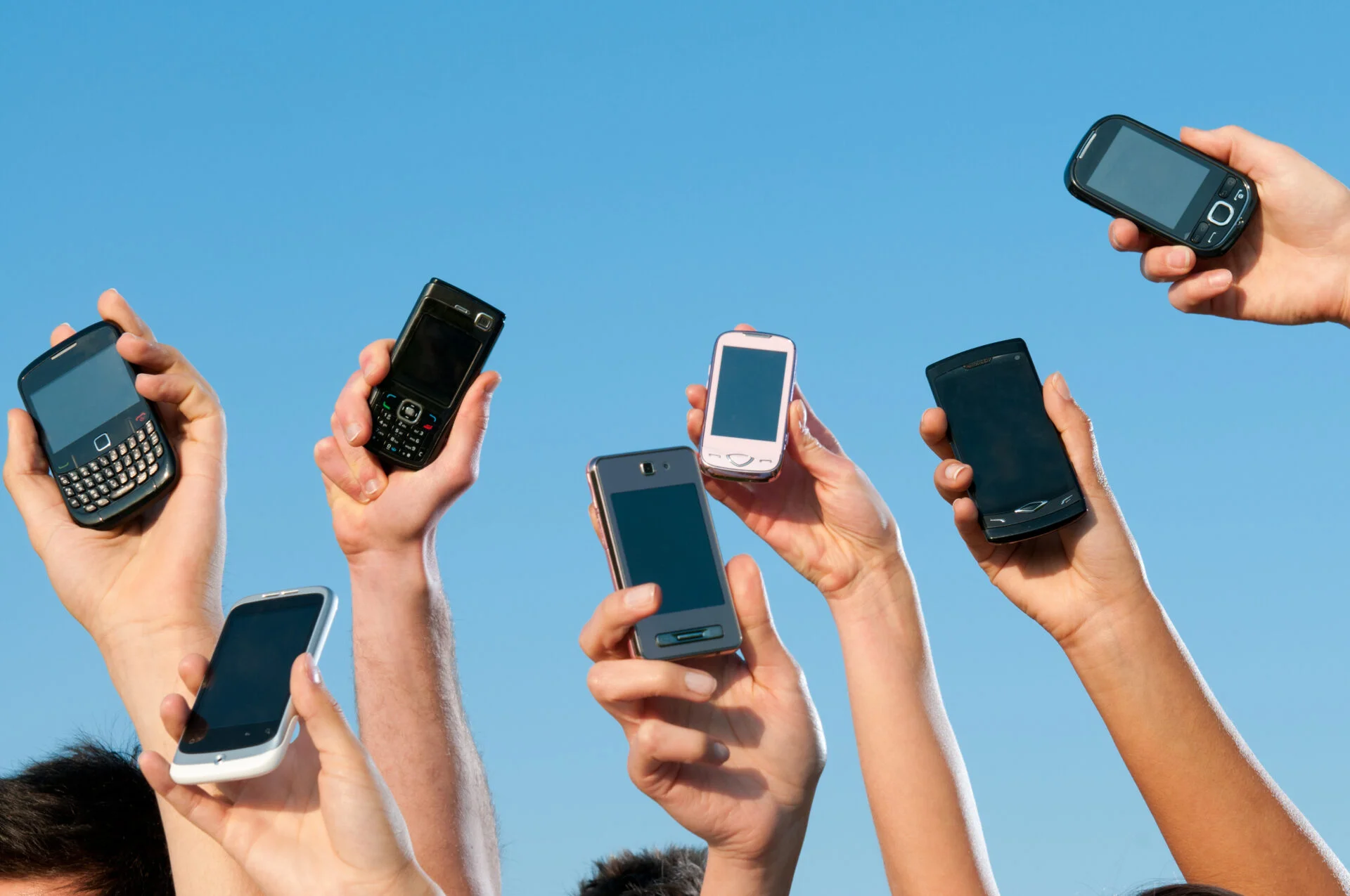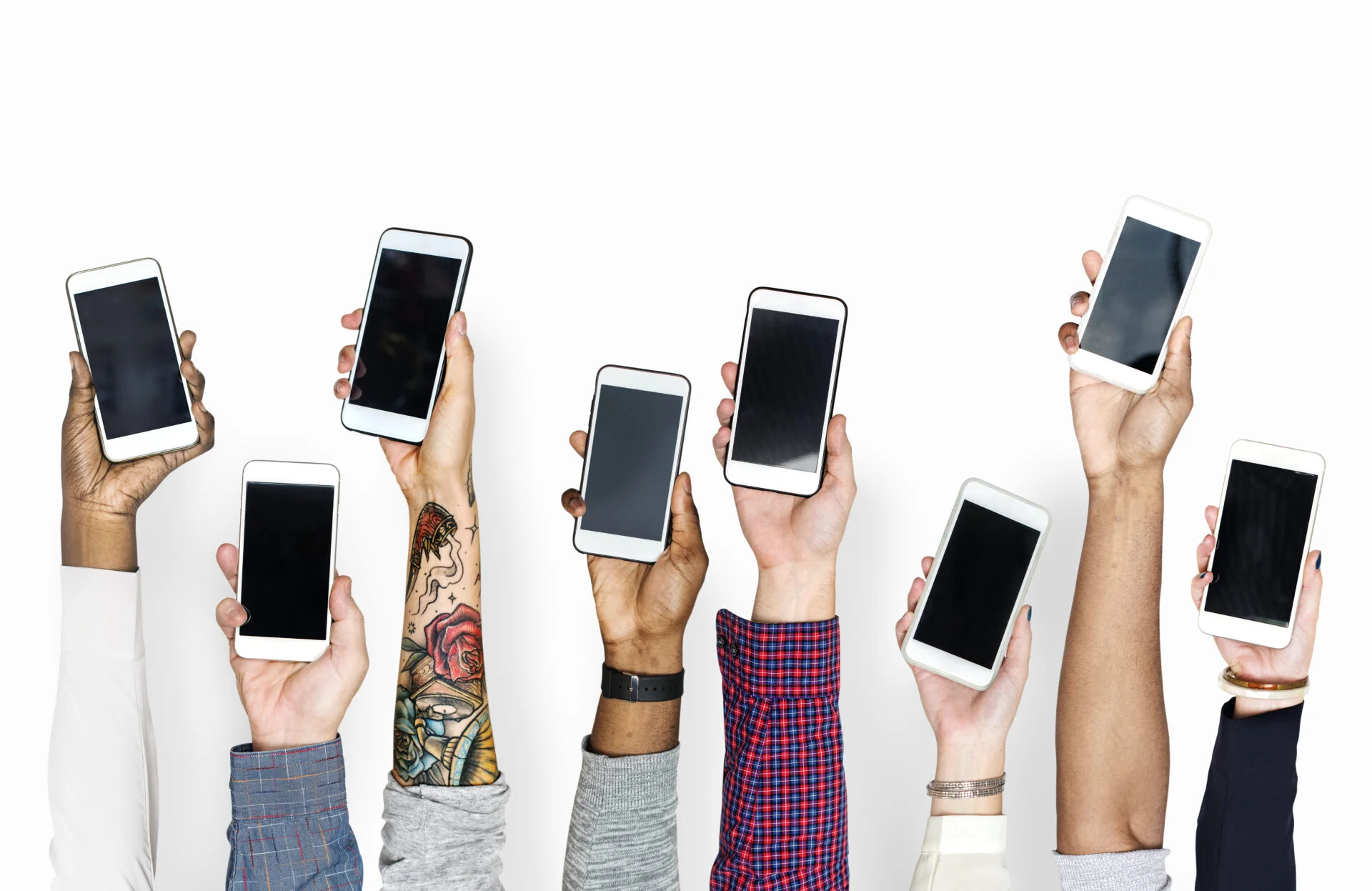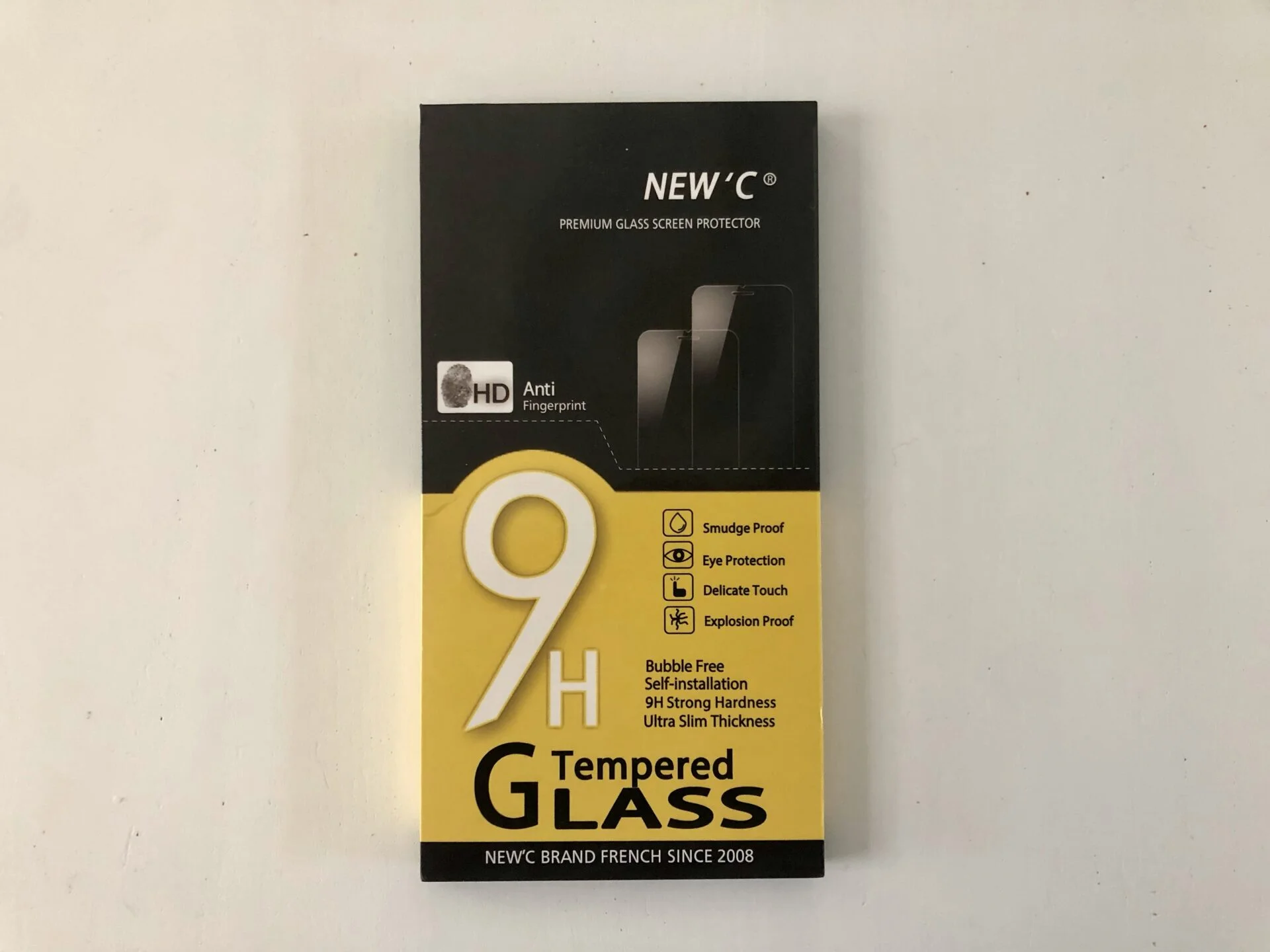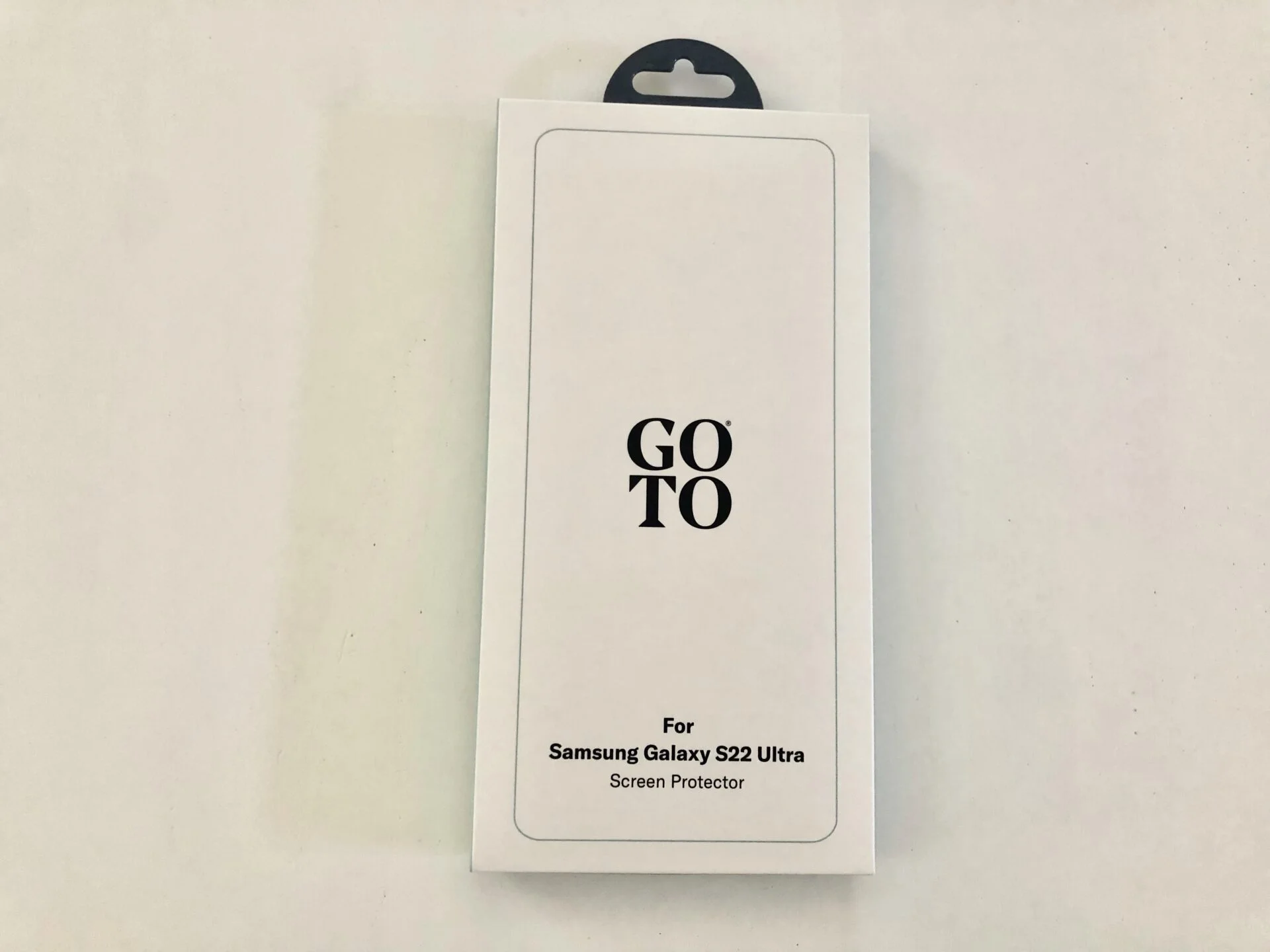Are there any mobile phone screen protectors that are free from indications of PFAS “forever chemicals?” PFAS has been identified inside everyday items that we use, like cell phones. Are there also problems with the smartphone screen protectors that are sold to accompany them? Mamavation sent three different phone screen protector products to an EPA-certified laboratory to find out. You’ve trusted Mamavation to bring you topics like safest green beauty makeup sans PFAS “forever chemicals,” safest cookware sans PFAS, safest parchment paper sans PFAS, and best water purification systems to filter PFAS, now join us for the results of testing for indications of PFAS “forever chemicals” for screen protector brands ZAGG, GOTO, & New C.
Scratching or damaging your phone is easier than you may think, especially if you carry your phone in your purse, backpack or pocket with other items like keys. Minor scratches can occur or even major ones when your phone is accidentally dropped. Therefore, when most people are purchasing screen protection, they are concerned about their high-quality cell phones (or other devices like an iPad or Apple Watch) being scratched, broken, or ruined. So they purchase a cell phone case and cell phone screen protectors to mitigate that issue. They may also purchase insurance for more impact protection. However, better impact protection protects your mobile phone without PFAS. There are many options available for plastic screen protectors, so Mamavation has come in to help with our EPA-certified lab to answer those PFAS questions for you along with results from our lab.
Disclosure: This post was medically reviewed by Sondra Strand, RN, BSN, PHN. This post also contains affiliate links.

Table of Contents
Do Mobile Phone Screens Contain PFAS “Forever Chemicals”?
We know that cell phones contain PFAS “forever chemicals” because Apple has disclosed this fact already, but we don’t really know what their competition is doing. Apple seems to be the only brand brave enough to make any chemical disclosures in a meaningful way.
If you search for anything related to PFAS on the Android website, you’ll find nothing. Samsung thinks it’s not fair for them to have to disclose even for factory workers. And Motorola also has nothing.
Does that mean Android, Motorola & Samsung phones are safer? No, it basically means they are not disclosing harmful chemicals like Apple is. That leads us to believe that Apple phones may be safer than other options because they are taking chemical disclosures and safety more seriously. Here’s what we found via brand:
- Apple iPhone — Received an A+ rating for Mind the Store Retailer Report for making lots of changes over the years and continuously leading the pack in terms of protecting consumers from toxic chemicals. We also found a document produced in November of 2022 that says they are working towards taking PFAS out of products. When will this be done? We have no idea because they didn’t provide a timeline, however, please note they are the only ones that disclose.
- Android — This brand does not disclose any chemicals or PFAS of any kind, so we have no idea what their chemical policies look like behind the scenes. If they do disclose, this was very hard to find.
- Motorola — This brand does not disclose chemicals or PFAS of any kind, so we have no idea what their real chemical policies are behind the scenes. If they do disclose, this was very hard to find.
- Samsung Galaxys — This brand not only does not disclose, but they refuse to do so even for workers claiming it would give them an unfair competitive disadvantage. (Watch us roll our eyes at that one as Apple discloses everything.)
It’s safe to say that the mobile phone industry is paranoid about sharing what chemicals they are using, but we believe this issue is bigger than trademarks and competitive disadvantages. Why is the industry refusing to share this information? You be the judge. Therefore the best choice for safety in cell phones is Apple iPhones in our opinion. Yes, even though they have disclosed problematic chemicals. It’s what other brands have not disclosed that worries us even more.

What Are Screen Protectors Made From
We found 4 basic types of cellphone screen protectors and we will go over those differences here. Please note that Mamavation did not test any nano-liquid options.
- Tempered Glass screen protector: This type of screen protector offers superior protection from dropping and breaking your screen. However, because it’s made from a type of glass, it’s thicker and easier to see.
- Polyethylene Terephthalate (PET) screen protector: These PET screen protectors have the least amount of scratch and impact protection out of the bunch, but they are the least expensive type.
- Nano Liquid Screen Protector: This is a chemical polymer you add to your screen that gives you added protection without allowing fingerprints to show up. Eventually, this product comes off and not all brands are not disclosing what they are made from for proprietary reasons. We did find some brands made from nano-sized silica dioxide, however, the safety of these particles has not been determined yet.
- Thermoplastic Polyurethane (TPU) screen protector: This flexible plastic is very difficult to install on your phone because you have to squeeze out lots of bubbles so it feels smooth. It also has a rubbery texture and may add an orange glare to your screen, but this is better protection overall.

Health Effects Linked to Exposure to PFAS “Forever Chemicals”
PFAS “forever chemicals” are per- and polyfluoroalkyl substances used as stain-resistant, water-resistant, & oil-resistant chemicals in commerce. They have been used for decades inside consumer products, manufacturing, and building materials. There are over 12,000 different chemicals in the PFAS chemical class (including PFOA & PTFE), and because there are so many of them, they are incredibly hard to identify and test for.
PFAS “forever chemicals” are problematic to human health and the environment. They are considered persistent, ubiquitous, and toxic, and therefore, it’s important you avoid them as much as you can to keep them from building up in our bodies. Many compounds can last for years in our bodies, therefore, it’s imperative to reduce the amount of PFAS you are exposed to from contaminated food and water.
Here’s a list of health effects PFAS chemicals are linked to presently according to our scientific advisor and Former Director of the National Institute of Environmental Health Sciences and National Toxicology Program, Linda Birnbaum:
- reduction in immunity
- reduced vaccination response
- increased risk of allergies & asthma in young children
- affect the growth, learning, and behavior of infants and older children
- increase cholesterol levels
- metabolic diseases like obesity & diabetes
- cardiovascular disease
- lower a woman’s chance of getting pregnant
- lowers male fertility
- increase the risk of kidney & testicular cancers
- Causes endocrine disruption
- Disrupts normal thyroid function

Mamavation Finds Traces of PFAS “Forever Chemicals” In Other Products
PFAS, otherwise known as per- and poly-fluoroalkyl substances (aka PFCs or perfluorinated chemicals, including PFOA and PFOS) are added to many products we purchase to make them “stain-resistant,” “grease-proof,” and “water-resistant.”
As we are writing this, Mamavation has also released 22 consumer studies looking for indications of PFAS “forever chemicals” inside everyday items and the food we bring into our homes. In these studies, we have learned quite a bit about where PFAS chemicals hide in everyday products. Learn more about our other PFAS consumer studies here:
- Nut Butters
- Pasta & Tomato Sauce
- Cooking Oils
- Butter Wrappers
- Electrolytes
- Activewear
- Sports Bras
- Green Beauty Makeup
- Period Underwear
- Ketchup
- Parchment Paper
- Cupcake Liners
- Plastic-Free Straws
- Fast Food Packaging
- Bamboo Flooring
- Toilet Paper
- Tampons
- Sanitary Pads & Incontinence Pads
- Dental Floss
- Baby Strollers
- Children’s Probiotics
- Kids’ Backpacks
Other Known Industries Using PFAS “Forever Chemicals”
PFAS chemicals have been used for decades to create stain resistance, water resistance, and grease-proof qualities in products to which they are added. If you’ve heard of coatings such as “Teflon” on cookware, fabrics made from “Gore-Tex” or treatments on carpets like STAINMASTER®, you’ve already heard about PFAS chemicals. Here’s more of what you may not have been aware of:
- Textiles & Fabrics: PFAS chemicals are very commonly found in industries such as textiles & fabrics to create stain-resistance, water-resistance, or “sweat-wicking.” To help you here, Mamavation has tested athletic wear, sports bras, and period underwear. We’ve also conducted other consumer studies on bedding, children’s clothing, infant car seats, jackets, & raincoats.
- Food Packaging: In food packaging, they are used in popcorn bags, pizza boxes, fast food wrappers & canisters, and the flat dish on the bottom of cakes at the grocery store. Mamavation has also tested different butter wrappers, parchment paper brands, plastic-free straws, and cupcake liners for indications of PFAS.
- Personal Care Products: The beauty industry has been notoriously guilty of using PFAS to create a waterproof or long-lasting effect in makeup products. So Mamavation tested the most popular green beauty makeup brands, and we have also found some issues with period underwear, tampons, and sanitary pads. We also found quite a bit of detection in dental floss.
- Toilet Paper: Mamavation found indications of PFAS in 24% of the toilet paper we sent to the lab. However, we also found plenty of ‘best” and “better” brands. Go take a look!
- Cookware: Most “non-stick” cookware is coated with PFAS chemicals, including some stainless steel cookware, and small kitchen appliances like air fryers. Check out Mamavation’s investigation on cookware.
- Carpeting & Flooring: PFAS has also been used in carpeting & flooring. Do you remember StainMaster™ carpet? That was PFAS. However, not all carpet has indications of PFAS. We recently tested one brand you can safely purchase. Mamavation also tested several bamboo flooring brands and found one brand that was free from PFAS.
- Furniture: Watch out for “stain-resistant” treatments on furniture. We have not done any testing in this category yet.
- Fire Fighting Foam: PFAS was used in firefighting foams and they have unfortunately been used extensively around military bases and airports. If you live close to a military base or airport, check with your local water district to see if they have tested the water for PFAS.
- Metal Plating, Semiconductors, Lubrications, & Coating Additives: Lots of industrial applications of PFAS are used to keep equipment from rusting, getting overheated, or provide water-resistant, or grease-resistant qualities.
- Drinking Water: Sadly, there are lots of places around the United States and all over the world that have drinking water contaminated with PFAS. Most of these areas are by military bases, airports, and other industrial parks that used PFAS for firefighting or other such uses. Luckily, Mamavation has done an investigation of the best water filters to remove PFAS.
- Car Wax, Ski Wax, & Surfboard Wax: Yes, you guessed it. PFAS is used here for its grease & water-resistant qualities.
- Some Processed Food: Mamavation has found indications of PFAS inside pasta & tomato sauces, nut butters, cooking oils, and ketchup. We are presently working on other food categories right now.
Mamavation’s Lab Tests for Indications of PFAS “Forever Chemicals” in Mobile Phone Screen Protectors
Mamavation sent mobile screen protectors from ZAGG, GOTO, & New C to an EPA-certified lab looking for indications of PFAS “forever chemicals.” The specific lab method used by Mamavation tested for total fluorine by using the Determination of Total Fluorine by Oxygen Flask Combustion and Ion-Selective Electrode. If detectable total fluorine was observed at a detection level of 10ppm, the lab did the Determination of free Fluoride Ion in the tablet by Ion-Selective Electrode and then subtracted that from the Total Fluorine to determine the amount of organic fluorine.
Organic fluorine testing is marker testing. There are over 12,000 different PFAS chemicals in commerce and it’s impossible to identify all of them. In fact, it’s only possible to identify about 100 or so in a really good commercial lab. Therefore, we do marker testing instead looking for the element they all have in common–organic fluorine. What else could organic fluorine possibly contain other than PFAS? Nothing you want to touch. The other main possibilities are other fluoropolymers, pharmaceuticals, and common hydrofluorocarbon refrigerants, such as 1,1,1,2-tetrafluoroethane (commonly known as R-134a) and 2,3,3,3-tetrafluoropropene (commonly known as HFO-1234yf).
Results from Our EPA-Certified Laboratory
- ZAGG Invisible Shield Fusion XTR2 eco made with Hexiom Impact Technology – Non-detect organic fluorine
- GOTO Screen Protector – Non-detect organic fluorine
- New C 9H Tempered Glass New’ C Premium Glass Screen Protector: – Non-detect organic fluorine
What does this mean? This means our lab did NOT detect any trace amounts of organic fluorine within ZAGG, GOTO, or New C screen protectors. Organic fluorine is indicative of PFAS “forever chemicals,” therefore none of these products have indications of PFAS “forever chemicals” above 10 parts per million (ppm), which is the detection level.




 Best & (Possibly Worst) Non-Toxic Rice Cookers of 2023
Best & (Possibly Worst) Non-Toxic Rice Cookers of 2023
Update smartphone
nice post really
Amazon doesn’t appear to carry the Zagg screen protector you have listed or atleast your link certainly didn’t take me to it and a search of amazon also didn’t turn it up. and the Zagg website doesn’t show the Zagg screen protector you have listed in any of their apple iphone products. everyone of their screen protectors has a prop65 warning